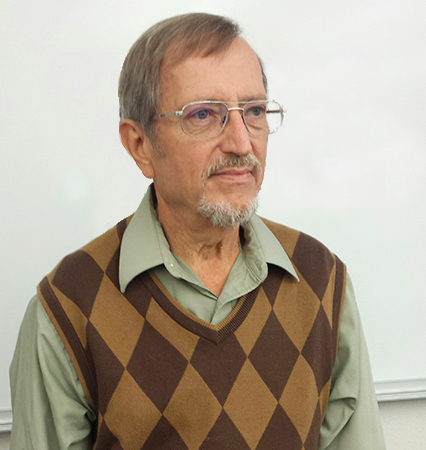
For 2017, eight specialty sections in the AARC selected one member to be named Specialty Practitioner of the Year (SPOTY) for their section. Criteria for this award included the nominee’s professional service, leadership, as well as whether the individual has furthered the art of science of respiratory care through outstanding contribution to, or service in, a specialty area of practice. We will feature each of our SPOTY members throughout the year in a special SPOTY Spotlight. This month, we’re learning more about our Continuing Care/Rehabilitation SPOTY: Mark W. Mangus, Sr., BSRC, RRT, RPFT, FAARC.
Learn More About AARC Specialty Sections
About Mark W. Mangus, Sr.

According to Mangus, he “navigated a very non-traditional path to education and credentialing” during his career.
“I practiced respiratory therapy for 10 years before going to a formal certification program,” Mangus said. He got his AA & AS with required courses to challenge RRT. He also took the CPFT and RPFT exams around the time he earned his RRT. He returned to a BSRC program in 1995 and graduated in 2000, taking a few courses at a time to complete his required hours.
“Along the way, I spent 20 years working critical care of from neonates to adults,” Mangus said. “I became interested in chronic lung disease in the 1980s and, with study and course attendance, designed and implemented a disease management and rehab program, which I managed for 21 years.”
Mangus also worked part time in home care and durable medical equipment, participated in various research efforts and taught in respiratory care training programs for several years. He has also been an active advocate for supporting those with chronic lung disease, especially COPD, through his 20-year participation as medical advisor to groups like EFFORTS (Emphysema Foundation For Our Right To Survive), COPD-Canada and Ultimate Pulmonary Wellness. He credits this work and achievement as factors leading to his designation as Fellow of the AARC, which, according to Mangus, is possibly his “proudest career accomplishment.”
“All these approaches to continuing care have given me both much to share and contribute to my colleagues in the section, over the years and currently, but also, avenues for discussion and learning for me and the members in this area of interest that we all share,” Mangus said.
While Mangus no longer works in the clinical setting doing rehab, he explains that he has not “slowed down in fostering and nurturing rehabilitation and its challenges with many thousands of patients across the globe.”
According to Mangus, he hopes being named SPOTY for his section will exemplify to his colleagues and students “the value of commitment to doing the best we can always.”
An Active Member
“I try never to miss an opportunity to share my enthusiasm for the AARC and the importance of being a part of ‘our’ professional organization,” Mangus said. “Only through our support and participation can we have the most effective role and voice in moving our profession forward.”
Mangus joined the AARC in 1981 while in his first formal RT education program. By 1984, he had published in RESPIRATORY CARE with an additional publishing in 1986. He met and got to know Phil Kittredge and joined the Journal Consulting Editorial Board, where he served for six years. He joined the specialty sections when they came into existence and has continued to regularly participate in them.
“This has been a unique and very advantageous factor in both my practice and participation in the association,” Mangus said. “Being named Specialty Practitioner of the Year for the Continuing Care and Rehabilitation Specialty Section is a special and humbling honor representing recognition by my peers for efforts throughout the years, as well as the current year in which it was bestowed; one that gives me a great source of pride.”
What’s Next?
Mangus intends to work with colleagues to advocate for better understanding of long term oxygen therapy, rehab for those with chronic lung diseases.
“And I will continue my quest to help folks live the highest quality of life within the unalterable limitations they find themselves contending with in their journey with chronic lung disease,” Mangus said.
Mangus also looks forward to returning to the classroom to help educate and shape our future RTs. He plans on writing possible publication pieces in the topics of long term oxygen therapy and conditioning of patients with chronic lung disease, both in collaboration with colleagues who are also engaged in disease management and these topics.
Closing Thought
“While all professional components of our health care delivery system are important and without all the system could not function effectively, RTs bring a special, exciting and unique kind of knowledge and care to the team,” Mangus said. “From life-saving interventions to the simple presence for conversation with those who suffer from the myriad of pulmonary ailments we encounter, I think it’s arguable that no others offer the scope of care that we are able to.”